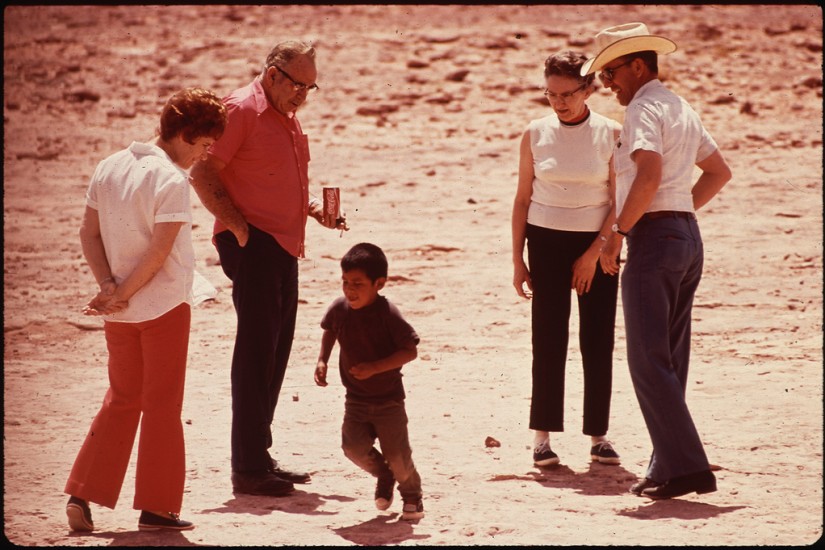’ábidiní, ha’át’íí sh?’: “What do you mean?”
One of my Navajo students interviews her aunt, who teaches Navajo language classes, and she writes a paper about revitalizing Diné Bizaad. I ask her if she would put me in contact with her aunt to answer some of my own questions. Her aunt agrees to e-mail me her responses, but I am so lost, I don’t know the right questions to ask. I write a rambling e-mail about adjectives and verbs and the state of being, and she never responds.
’abi’doog??: “He was hauled away.”
When I was little, my mother called the cops on my father, often. Usually after they had both been drinking. I remember standing on the street with our neighbors, watching the cops chase my father down the road, shove him into a police car, and haul him away.
’ábi’dool’??dii, t’áá ’aaníí bee: “that with which he was really harmed”
What are the roots of domestic violence on the reservation? Inescapable poverty. Powerlessness. Untreated mental illnesses. Self-medication through alcohol. Cycles of abuse: fathers beating mothers beating sons beating their lovers and future mothers.
’ábidoo?d?i?: “It will annihilate them.”
Rates of domestic violence and sexual assault are higher among Native Americans than any other ethnicity in the United States. A study by the Centers for Disease Control and Prevention from 2008 reported that almost forty per cent of Native American women identified as victims of domestic violence during their lifetimes. These are conservative figures; many assaults go unreported.
